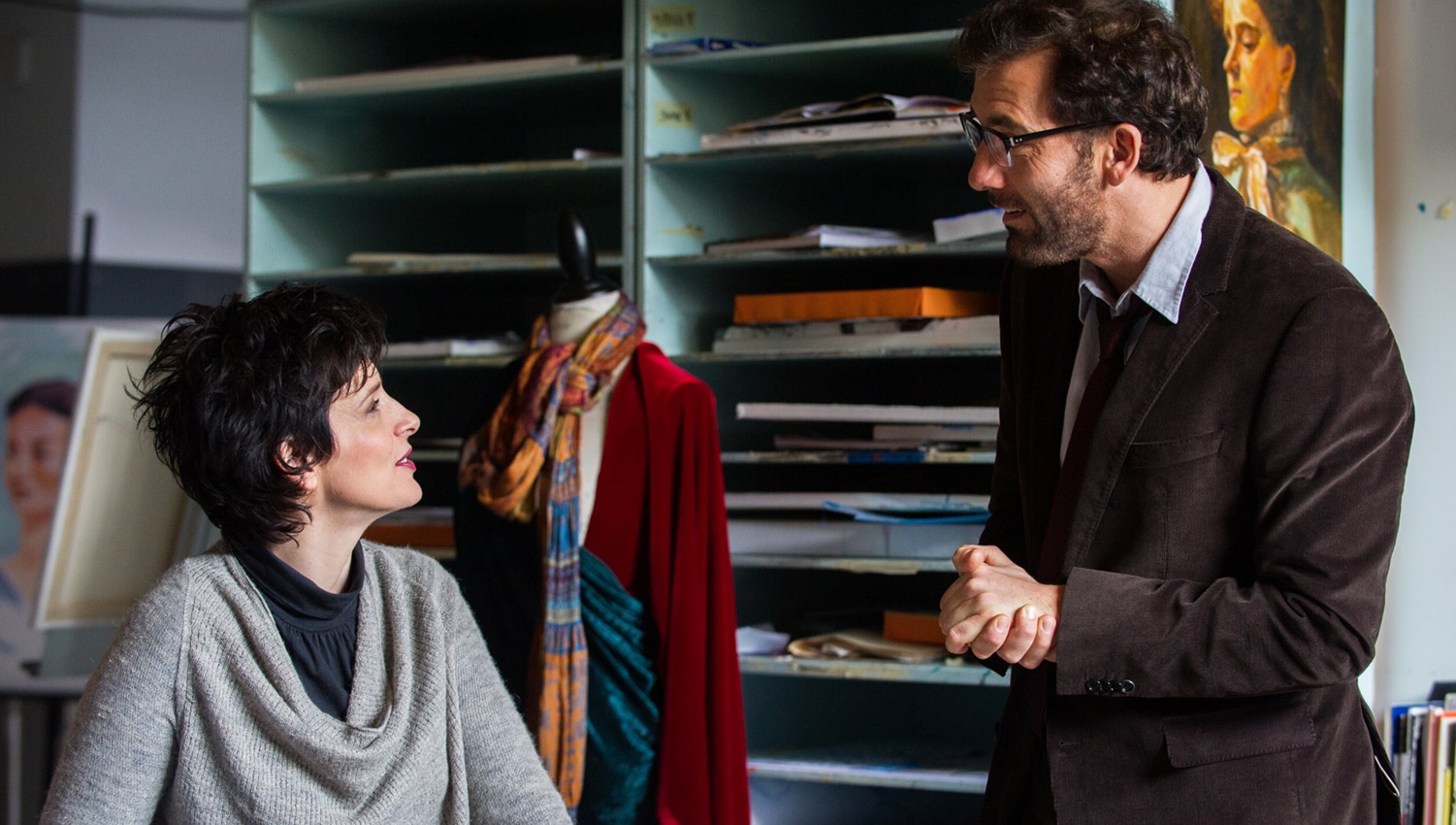
Words & Pictures
Dustin Chase
The Dallas International Film Festival opened with the new film Words and Pictures, which really displays a nice argument between which art form is more powerful and important. Of course this isn’t just about an English teacher and an Art teacher having what the students call “A War.” The characters are well written and highly problematic in Gerald Di Pego’s script, directed by Australian filmmaker Fred Schepeisi (A Cry in the Dark). Clive Owen (The Boys are Back) once again finds a script that challenges him as an actor; his resume just gets more diverse and impressive with each role, and Oscar Winner Juliette Binoche (The English Patient) gives one of her best performances of late.
Fighting to retain his job as an English teacher at a local prestigious prep-school, Jack Marcus (Owen) has a destructive alcohol problem that has brought his career into question with the school board. They have also hired a new art honors teacher, renown painter Dina Delsanto (Binoche), who makes it very clear to the staff and students that she is not there to be their friend, but to push them to do great fine art. The figurative argument between the power of words versus pictures enthralls the entire school as Marcus and Delsanto flirt with each other professionally and socially.
The performances rely heavily on the writing, which is this film’s strongest component
Yes, it’s another film that details the destructive behavior of alcohol addiction, but this film is as much about these two people who have their own vices to overcome as it is a light romance or the exploration of human behavior. Words and Pictures does cover quite a few topics, including bullying, Delsanto’s battle with Rheumatoid Arthritis and how she needs the challenge provided by Marcus to find her inspiration. The film also teases the audience with their interaction, especially in the beginning; we only see the barbs they trade back and forth in the hallway, which really make their limited screen time together even more fascinating.
The analogies both characters use to back up their argument of words vs. pictures will be familiar (i.e. a picture is worth a thousand words) but some of them are really unique and allow the viewer to see the argument a different way. The film unfortunately falls face first into schmaltz by the conclusion, and the final shot of Marcus and Delsanto laughing at each other’s hateful bickering rang very false. The musical score was entirely too light hearted and underwhelming for a lot of the more dramatic moments. Even the performances rely heavily on the writing, which is this film’s strongest component.
Final Thought
Through a great script and understood broken characters, this film becomes a delight.
